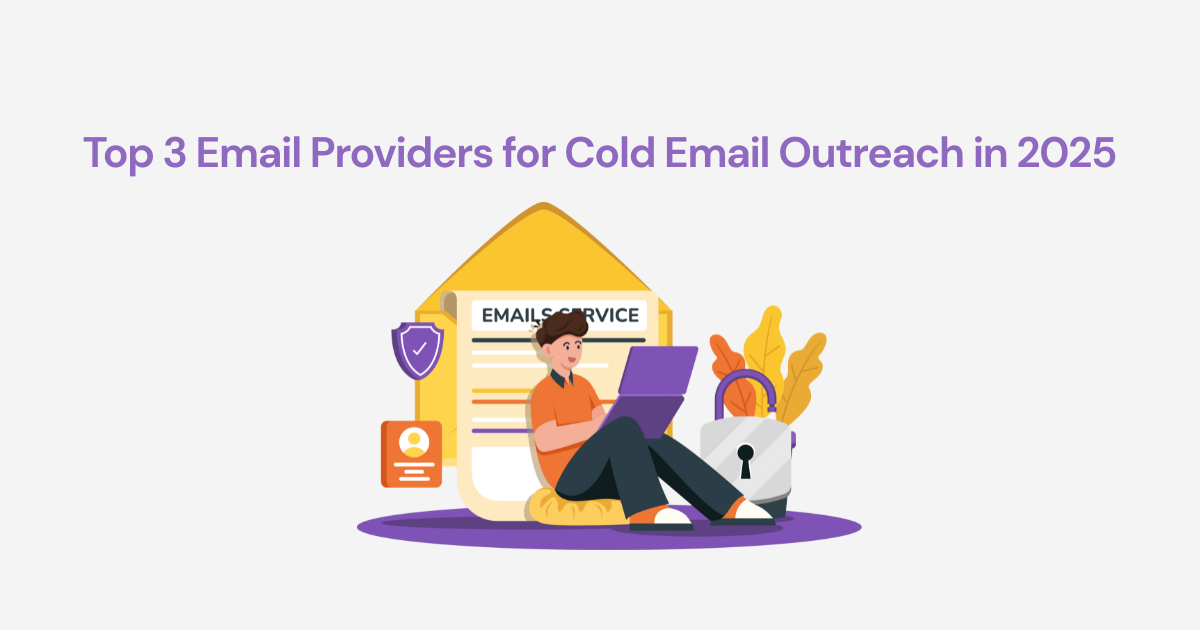
Cold email isn’t just about writing sharp copy or clever CTAs. It’s about deliverability. Because if you don’t make it to the inbox, none of that other stuff matters.
This post isn’t about tools like Lemlist, Instantly, or Woodpecker. Those help manage campaigns.
We’re going deeper - to the infrastructure level.
The email providers that actually send your emails. They are the ones that play a role in whether your emails are seen or end up invisible in the spam folder.
Let’s rank the best email providers for cold email in 2025 and explore how to use them without blowing your domain reputation.
Best-in-class deliverability with intuitive setup
Google Workspace remains the top choice for cold emailers who want to keep things clean, simple, and effective.
Why?
And beyond specs, it just works.
“Google Workspace has the best deliverability. Anyone who says otherwise is either ignorant or trying to sell you something.”
— r/coldemail

The takeaway? Google is still the gold standard if you warm up your inbox properly and monitor domain reputation.
A powerhouse for scale with robust admin control
Office 365 is a serious contender, especially for enterprises or tech-savvy teams. It matches Google on reputation and beats it on volume.
There’s a catch though. The setup is more technical. Configuring DNS records and tracking sender reputation takes more effort than with Workspace.
Still, if you’re looking to scale cold outreach across multiple mailboxes with tight control, Outlook is your tool.
Ultimate control if you know what you’re doing
If you want to control every lever in your sending stack, a custom SMTP setup hosted on Azure gives you that power.
But you’re also responsible for everything.
This path is best for companies with deep technical resources or a dedicated email infrastructure engineer. For everyone else, Google or Microsoft is the smarter play.
Choosing the right email provider is just the first step. If you're sending cold emails from a new, inactive, or unproven domain, your campaign could still flop.
Why?
Because inbox providers now judge you on engagement signals, not just volume.
If your domain hasn’t built trust with mailbox providers, your message won’t get delivered, no matter how good your copy is.
This is where warm-up matters.
In 2025, cold email deliverability depends on more than authentication.
Providers like Gmail and Outlook now monitor:
Without warming up, your domain looks like a spammer by default.
Warm-up done right simulates real engagement:
✅ Emails get opened
✅ Replies are sent
✅ Messages rescued from spam
✅ Volumes increase gradually
✅ All activity mimics human behavior, not bots
And the best way to do this? Use an IMAP-based email warm-up tool that’s trusted by real senders, like Mailivery.
.png)
Mailivery isn’t just another warm-up tool. It’s a deliverability system built around how inbox providers actually judge your reputation.
Here’s what makes it different:
Mailivery uses a network of monitored inboxes. No fake or throwaway accounts. No AI-browser hacks. Every interaction mirrors authentic behavior.
Each email is opened, replied to, and rescued from spam if needed. These interactions train Gmail and Outlook to trust your domain.
Volume increases only as your reputation improves. This mimics natural user behavior instead of the artificial spikes that get flagged by spam filters.
Mailivery includes a two-layer verification process to clean your email list before you send:
List hygiene is one of the most overlooked factors in cold email. Skip it, and your campaign can land in spam even if everything else is perfect.
If cold email is your growth engine, treat deliverability like your fuel system.
Do it right, and you won’t just land in inboxes. You’ll convert.
Because cold email isn’t a volume game. It’s a trust game. And you build trust with infrastructure, warm-up, and precision.
